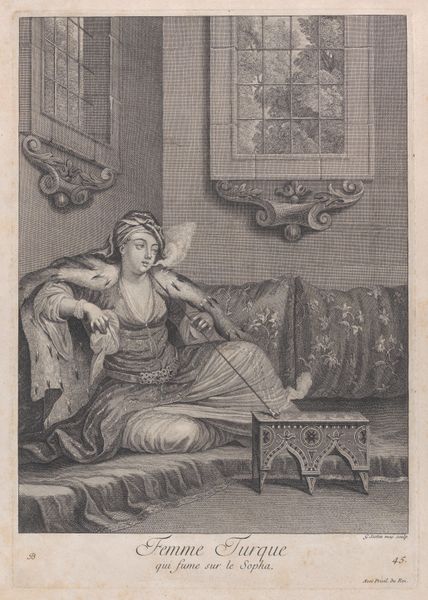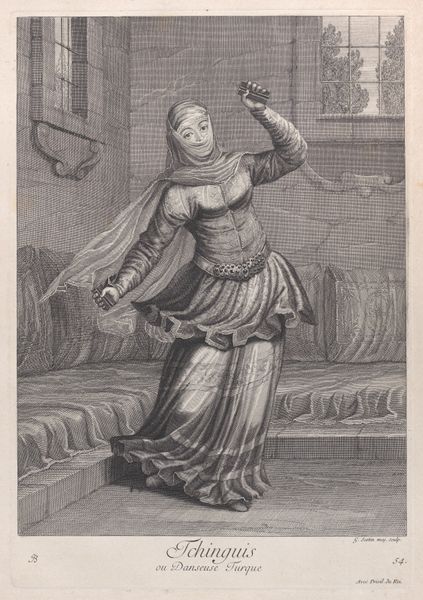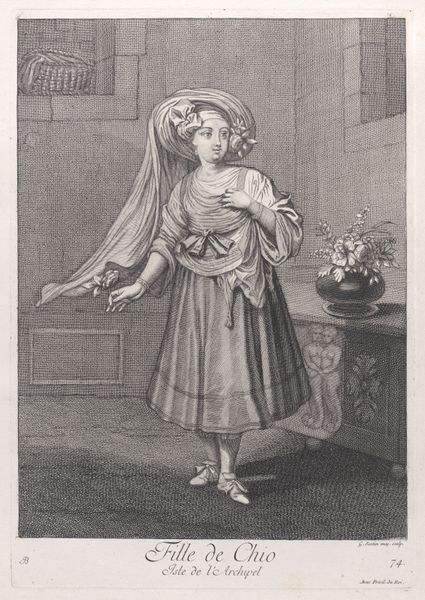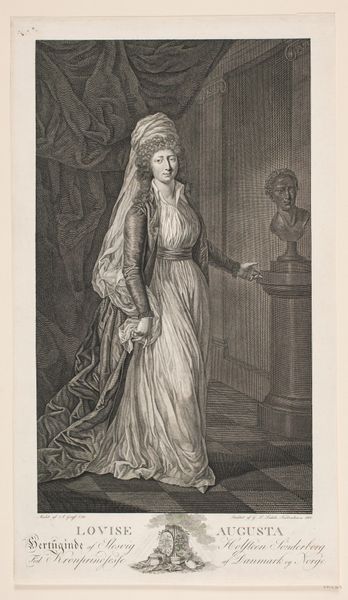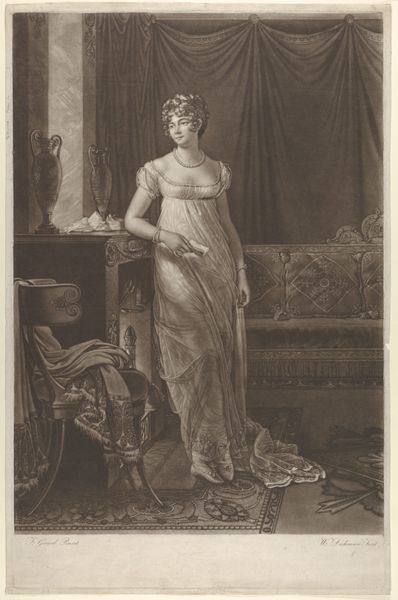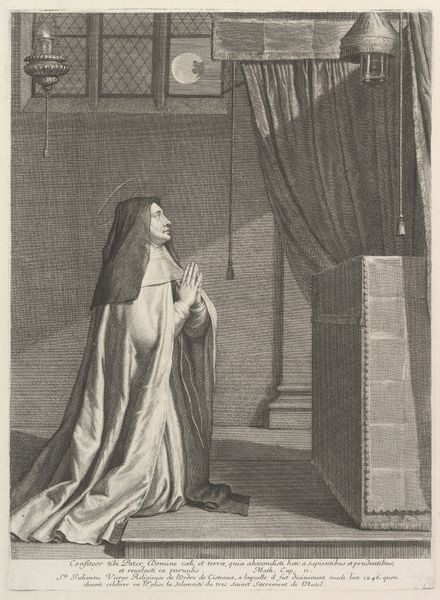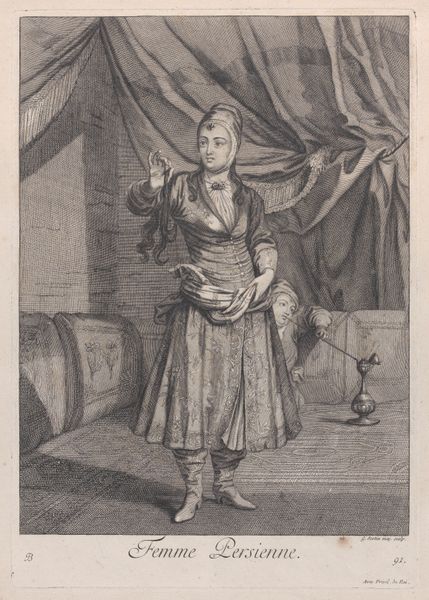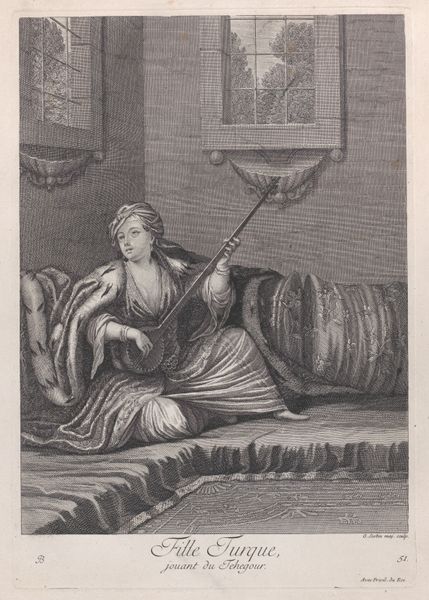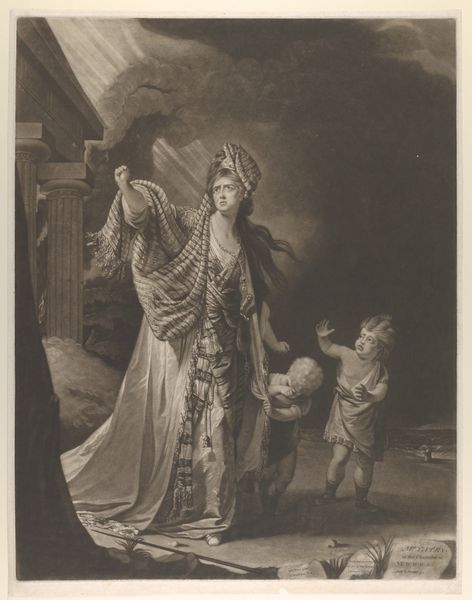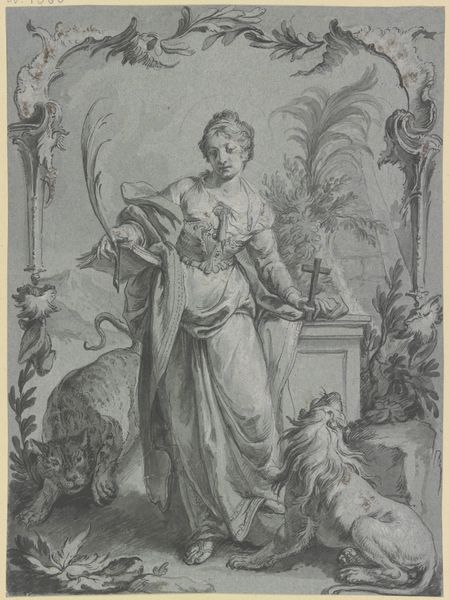
Dame Grecque, dans son Apartement, plate 68 from "Recueil de cent estampes représentent differentes nations du Levant" 1714 - 1715
0:00
0:00
drawing, print
#
portrait
#
drawing
# print
#
islamic-art
#
genre-painting
Dimensions: Sheet: 16 7/16 × 12 3/16 in. (41.7 × 30.9 cm) Plate: 14 1/8 × 9 13/16 in. (35.9 × 25 cm)
Copyright: Public Domain
Editor: Here we have Jean Baptiste Vanmour’s "Dame Grecque, dans son Apartement," a print dating from the early 18th century. I'm really drawn to the way the light and shadow play across the fabric in this interior scene, it feels very luxurious. How do you read this piece, especially considering its medium as a print? Curator: Well, I see this print as deeply embedded in its means of production. It is part of "Recueil de cent estampes," so it is crucial to consider its function within a larger project of documentation and representation of the Levant. We must investigate the socio-economic systems involved. Editor: Could you elaborate a bit on these systems? Curator: Consider the labor: who produced the paper, engraved the plate, and printed the image? This print becomes evidence of cultural exchange but also potentially exploitation and the power dynamics inherent in representing other cultures. Where was the print sold? Who was buying these prints, and what did they intend to do with them? The materiality directs the questions one must pose. Editor: That's fascinating! So, instead of focusing on the "exotic" subject, we examine how this image came into being and the conditions surrounding its consumption? Curator: Precisely. Even the seemingly simple act of creating and distributing these prints speaks volumes about early modern Europe’s relationship with the East, the burgeoning print market, and the development of visual culture as a form of knowledge and control. Editor: I hadn’t thought about it that way. Examining the "how" and "why" behind the artwork, instead of just the "what," opens up a whole new dimension of understanding. I appreciate you showing me how to look at art this way. Curator: My pleasure. Focusing on material conditions helps us to reconsider so much art history and the ways we analyze art objects and their production, which ultimately also drives meaning.
Comments
No comments
Be the first to comment and join the conversation on the ultimate creative platform.
